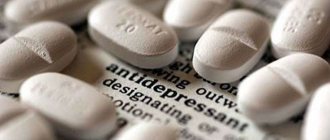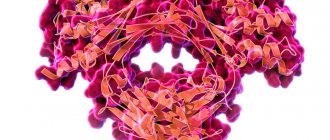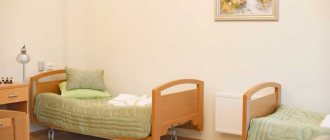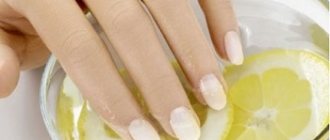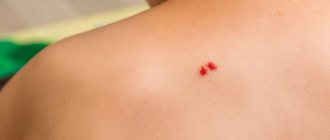Nocturia is characterized by disruptions in the urinary system. At night, copious urine output is most pronounced. While a healthy person will produce two to three times more urine during the day than at night.
Most often, such problems are observed due to impaired blood supply to the kidneys due to diseases of the cardiovascular system. If a patient gets up at night to empty the bladder more than twice, this is, according to experts, a pathological disorder. Unless, of course, this is due to the fact that you consumed a large number of drinks in the evening. Among them: tea, coffee and vodka.
The manifestation of this disease is observed in cases of gradually disappearing edema, during the treatment of nephrotic syndrome, as well as in those who suffer from cardiovascular failure. In these cases, night diuresis is, one might say, compensatory in nature. Due to it, the body makes attempts to get rid of the consequences of oliguria. Its occurrence is observed in the daytime. The load on the heart increases and the blood supply to the kidneys deteriorates. And at night the water-salt balance is restored. When cardiovascular failure develops, this time interval is not enough for the renal circulation to normalize. For this reason, patients experience stable edema.
Causes of nocturia
There are two types of pathology:
- Constant - night diuresis increases due to a decrease in daytime diuresis, which is observed in chronic diseases of internal organs. In rare cases, urination stops completely during the day, then they speak of true nocturia.
- Temporary - the daily volume of urine does not decrease, the problem accompanies various diseases.
Risk factors and possible causes of nocturia:
- kidney disease
- liver failure
- cirrhosis of the liver
- heart failure
- urinary tract infections, including cystitis
- overactive bladder
- thyroid pathology
- diabetes mellitus and diabetes insipidus
- pernicious anemia
- hypercalcemia
- atrophy of the pelvic floor muscles in women
- prostate adenoma in men
- taking certain medications, especially diuretics
Nocturia in older people often develops against the background of an age-related decrease in vasopressin production. Another name for this peptide hormone of the hypothalamus is antidiuretic, since it regulates the amount of fluid in the body: it increases the concentration of urine and reduces its volume. If the amount of vasopressin is excessively low, diuresis increases.
Healthy people occasionally experience nocturia due to drinking large amounts of liquid before bed or various drinks that have a diuretic effect - alcohol, strong tea, coffee.
Nocturia in women during pregnancy and children under 2 years of age is considered a normal condition.
The impact of sleep disturbance on physical health: increased risk of somatic diseases
It has been reliably established that the normal cycle of wakefulness and sleep ensures the stability of the homeostatic regulation of the autonomic, neuroendocrine and immune systems [24]. There are metabolic and endocrine changes in sleep-deprived healthy volunteers that are similar to those observed during normal aging. Accordingly, it has been suggested that chronic sleep loss may exacerbate the severity of age-related pathologies such as diabetes and hypertension [25]. Sleep also plays a role in regulating the immune system, as sleep deprivation has been noted to have a suppressive effect on the immune system. Loss of sleep also contributes to cardiovascular discomfort. Nocturnal complications can become factors of myocardial ischemia.
Symptoms of nocturia
The main manifestation of nocturia is regular urination at night. Because of this, a person often suffers from insomnia, that is, after waking up to go to the toilet, it takes a long time to fall asleep again. Constant lack of sleep usually leads to the development of the following psycho-emotional and cognitive disorders:
- decreased productivity
- irritability
- chronic fatigue
- Bad mood
- memory impairment
Nocturia in older people is often accompanied by urinary incontinence.
Diagnostics
The doctor makes a preliminary diagnosis after an initial examination and collection of medical history: the number of urges per night, accompanying symptoms, lifestyle, previously identified diseases. The so-called urination diary provides valuable information for medical analysis. It is recommended to conduct it for 3-4 days before going to the clinic. The diary records the following data indicating the exact time:
- what was drunk and how much
- volume of urine (ml) during urination
- the presence of episodes of involuntary urine loss, its volume and reason, for example, coughing, laughing, playing sports, physical labor
- the occurrence of unbearable urges and assessment of their strength on a scale from 1 to 3
- presence of pain before, during and after urination
The following studies are also carried out: general analysis and bacterial culture of urine, blood tests, including the level of vasopressin, Zimnitsky test to determine the concentration function of the kidneys, ultrasound of the bladder, kidneys and abdominal organs.
Modern view of nocturia in patients with benign prostatic hyperplasia
M.E Efremov1, V.L. Medvedev1,2, P.V. Shornikov1,2 1 GBUZ "Research Institute - Regional Clinical Hospital No. 1 named after. prof. S.V. Ochapovsky" Ministry of Health of the Krasnodar Territory; Krasnodar, Russia 2 Federal State Budgetary Educational Institution of Higher Education "Kuban State Medical University" of the Ministry of Health of the Russian Federation; Krasnodar, Russia Contact author: Efremov Mikhail Evgenievich Tel.; e-mail: [email protected]
Benign prostatic hyperplasia (BPH) is a disease that occurs in elderly and senile men, and often manifests itself with lower urinary tract symptoms (LUTS) [1]. One of the main manifestations of LUTS in patients with BPH is nocturia [2, 3].
According to the 2014 International Continence Society (ICS), nocturia is a condition characterized by the need to wake up at night to urinate one or more times [2]. Although the definition of nocturia states that the patient “expresses” a complaint, this symptom may not bother the patient [4, 5]. Thus, the definition allows you to select patients who do not experience discomfort when waking up at night [6]. The most valuable tool for diagnosing nocturia is a voiding diary.
Epidemiology of nocturia
Nocturia affects both men and women equally throughout life, although the overall prevalence increases with age [7]. The most common occurrence of nocturia is observed in patients over 50 years of age, with two or more episodes of urination per night noted in 20.9% of patients [8]. The prevalence of nocturia in European countries is: 0.4% per year among adults aged < 40 years, 2.8% among persons aged 40-59 years, 11.5% among persons aged ≥ 60 years, overall remission after drug therapy - 12.1% per year. Up to 60% of patients over 70 years of age complain of nocturia more than twice a night [3].
A study by Van Dijk L. et al., based on the new 2014 ICS definition of nocturia, involving 2506 people over 18 years of age, found a clear relationship between nocturia and general well-being. Thus, among respondents who rated their health as excellent, nocturia occurred in 5% of cases, and among respondents with poor or fair health, its frequency was 34% [9-10]. A correlation was also found between the incidence of nocturia and age. The maximum frequency (37%) was noted in the group of the oldest people (over 75 years), and the minimum (5%) was observed in the youngest respondents (18-34 years) [9]. Nocturia can be a characteristic symptom of many diseases, such as heart failure, metabolic disorders, urinary incontinence, depression and autonomic disorders [11-12]. Doctors of different specialties may encounter nocturia, and patients, in turn, may turn to specialists of different profiles. Currently, there are no specific symptoms of nocturia and no specific medical specialty [5]. Nocturia may be a marker of concomitant diseases. This is consistent with the concept that nocturia should be considered outside the category of lower urinary tract symptom. [13-14]. Nocturia may be associated with an increase in glucose, a decrease in nocturnal plasma melatonin levels, and an increase in catecholamine levels [15]. Nocturia is a characteristic symptom of many diseases, such as heart failure, metabolic disorders, urinary incontinence, anxiety and autonomic disorders, and has a significant association with kidney function and cancer [16].
More than 60% of men believe that nocturia reduces their quality of life [8]. There has been an increase in the mortality rate in people with nocturia in older age groups by three or more times [17, 12, 18]. The sleep disturbance associated with nocturia occurs during slow-wave sleep, thereby reducing its period and recovery time per night [19]. Interrupted sleep leads to daytime fatigue, impaired cognitive function, and trauma. [9,10,20]. This, in turn, increases the risk of road traffic accidents, increases mortality and increases medical financial costs [21]. Medical costs and hospital stays increase threefold for patients with nocturia, even after adjusting for patient age, sex, and disease or risk factors [22]. Falling at night is caused by a strong urge to urinate (the patient, still half asleep, rushes to the toilet) - this is the main cause of injury and death [23,24]. Trauma occurs between two and four o'clock in the morning more often than at any other time interval [24,25].
Modern aspects of diagnosing nocturia
The modern classification of nocturia is based on data from voiding diaries [26]. Thanks to information obtained from voiding diaries, nocturia is classified as follows: diurnal polyuria, nocturnal polyuria, reduced bladder capacity, sleep disorders and circadian rhythm disorders.
Daily polyuria (Blanker et al.) in adults is defined as a urinary volume of more than 2.8 liters per 24 hours. A urinary volume of 2.8 liters per day applies to a person weighing 70 kg and a urine output rate of more than 40 ml/kg/day. 24 hours [27].
It is necessary to take into account in patients when identifying daily polyuria: body weight, characteristics and habits of fluid intake, time of year, especially in the southern regions, the presence of concomitant pathologies, especially diabetes mellitus and insipidus, hypertension and the use of drugs that increase diuresis, etc. [28 ]. High fluid intake may be a consequence of dehydration due to poorly controlled diabetes. Nephrogenic diabetes insipidus is the result of impaired tubular function, which reduces the ability to concentrate urine. Central or neurogenic diabetes insipidus causes generalized polyuria due to a deficiency in the secretion of the antidiuretic hormone, argeninvasopressin. This deficiency may be caused by a pituitary tumor or panhypopituitrism. Polyuria can be a side effect of prescribed medications such as diuretics, calcium channel blockers, tetracyclines and lithium [29].
Nocturnal polyuria (NP) is the predominance of nighttime diuresis over daytime. Nocturnal polyuria is one of the many causes of nocturia [30]. NP is diagnosed when nocturnal diuresis is more than 1/3 of daily diuresis [31]. Nocturnal polyuria - an increase in urine production at night, with nocturnal diuresis more than 6.4 ml/kg, nocturnal diuresis rate more than 0.9 ml/min and nocturnal polyuria index (the ratio of the volume of nocturnal diuresis to the total volume produced in 24 hours) above a certain threshold, depending on age [31-34]. The International Continence Society defines nocturnal polyuria as a nocturnal polyuria index value greater than 20% in younger patients or greater than 33% in older patients [35]. Therefore, the precise definition of nocturnal polyuria depends on age. When analyzing nocturnal polyuria, it is necessary to take into account sleep time, which, ideally, should be 8 hours. If sleep duration deviates upward or downward, it is necessary to calculate the nocturnal polyuria index (NPI) = % of daily diuresis) = (volume of nighttime diuresis in ml.) / (volume of daily diuresis in ml.) x 100% [35].
Diagnosis of nocturnal polyuria is based on changes in INP indicators with age: >20% of daily diuresis in young people and >33% in older people [33]. This range does not provide a clear understanding of the gradation of the definition of NP in patients of the middle age group.
Nocturnal diuresis is defined as the volume of urine produced from the moment the patient goes to bed, excluding urination before bedtime and including the volume of morning urination immediately after waking up [36].
To reliably assess nocturnal diuresis, it is necessary to recommend that the patient empty the bladder immediately before bedtime and, if possible, immediately after waking up in the morning, because During the first urination at night, part of the urine is formed before the person goes to bed, and part of the urine during morning urination is formed after waking up [35]. The cause of nocturnal polyuria may be associated with the characteristics and habits of fluid intake in the evening and at night [29].
NP may depend on the time of year, especially in the southern regions, the presence of concomitant pathology, and a defect in vasopressin production at night. Circadian fluctuations in urine specific gravity are normally caused by increased production of antidiuretic hormone in the posterior lobe of the pituitary gland at night [29]. The presence of hypersthenuria in patients in the morning portion of urine with normal specific gravity in the daytime may be a manifestation of non-urological pathology and requires consultation with an endocrinologist or cardiologist [24]. Conditions such as cardiac and pulmonary insufficiency and venous congestion such as chronic venous insufficiency lead to greater overload of the heart in a horizontal position, complicating cardiac output, which leads to increased natriuresis and, as a consequence, increased diuresis. Insufficient attention is paid to such a condition as sleep apnea (NA) [37]. NA results in negative intrathoracic pressure as a result of inspiratory effort against airway closure, which results in the release of atrial natriuretic peptide [38–39]. An increase in atrial natriuretic peptide causes natriuresis, resulting in nocturnal polyuria with high urine specific gravity [40]. Continuous positive airway pressure (CPAP) is one of the effective treatments for AN. NCAP improves not only sleep disturbance but also symptoms of nocturia [41]. However, the underlying mechanisms by which NADP treatment improves nocturnal RHR in patients with AN remain not fully elucidated [41].
The cause of nocturnal hyposthenuria and nocturnal polyuria with normal specific gravity of urine during the day may be a violation of the circadian rhythm of vasopressin [29]. Disruption of the circadian rhythm leads to a decrease in the nocturnal secretion of arginine vasopressin or a decrease in its activity, resulting in the release of more dilute urine. This defect can occur due to damage to the central nervous system, namely a disruption of the hypothalamic-pituitary connection, Parkinson's disease or multiple sclerosis. A decrease in plasma arginine vasopressin is detected in elderly people with nocturia. The correspondence of low urine specific gravity at night with increased nocturnal diuresis can usually be explained by a decrease in the production of antidiuretic hormone [12].
We must not forget that the cause of nocturnal polyuria may be iatrogenic. Some medications: diuretics, non-steroidal anti-inflammatory drugs [29].
Reduced bladder capacity. Reduced bladder capacity is characterized by a decrease in bladder capacity of 60% or more and urine output of 240 to 280 ml. In severe cases, the capacity may decrease below 150 ml. Reduced bladder capacity is a common cause of problems with the storage function of the bladder, usually due to urological pathology [42-44]. Reduced bladder capacity is the most common cause of nocturia in urological practice [43-44]. Reduced bladder capacity occurs as a result of prostatic hyperplasia, overactive bladder, intestinal cystitis, lower urinary tract cancer, lower urinary tract stones, side effects from medications, aging, etc. [42].
The main differential difference is the determination of the anesthetic capacity of the bladder. With a false reduction in capacity, the volume of the bladder can be increased by up to 50%. Reduced bladder capacity also characterizes a neurogenic bladder, which can be a consequence of Parkinson's disease, multiple sclerosis, spinal cord injury or stroke. A urinary disorder leading to a high volume of residual urine may manifest itself as a decrease in bladder capacity with a frequent urge to urinate in small portions. What occurs against the background of prolonged bladder outlet obstruction, incomplete emptying of the bladder against the background of its decompensation. Other causes of decreased bladder capacity include lower urinary tract cancer, lower urinary tract stones, drug side effects, and age [42, 29].
As a result of the analysis of urination diaries, it is possible to identify the circadian nature of bladder capacity during the day. This may help guide treatment in patients with reduced bladder capacity at night [45]. As a result of the therapy, an increase in nighttime bladder capacity can be predicted. What will be a positive result of therapy with preservation of daily urine volume [46]. Nocturnal bladder capacity, as opposed to total bladder capacity, is a potential target for improving outcomes in the treatment of nocturia [4546].
Primary sleep disorders, such as insomnia, restless leg syndrome, narcolepsy, sleepwalking, and nightmares, can cause nocturia [47]. Some conditions lead to sleep disorders and are associated with nocturia: mental disorders such as depression and anxiety syndrome, chronic pain syndrome, alcohol or drug addiction, taking various medications (corticosteroids, beta-blockers, thyroid hormones, psychotropic and antiepileptic drugs), organic pathology. Heart failure, COPD, endocrine disorders, and neurological disorders can also lead to sleep disturbances [43, 47].
Disruption of the circadian rhythm is also a cause of nocturia. The circadian rhythm, often called the peripheral clock, is a feedback mechanism that exists in most organs and cells. This clock is organized by the central clock in the suprachiasmatic nucleus of the brain. Although it is known that the circadian rhythm of urine production and storage in humans is diurnal, the underlying mechanism of its regulation is not clear [48]. Day-to-evening changes in urinary frequency are associated with a genetic rhythm that is controlled by a system involving the brain, kidneys, and bladder [48–50].
Conclusion
Thus, nocturia can be caused by many factors (arterial hypertension, diabetes mellitus, coronary heart disease, cerebrovascular lesions, etc.) [51], which must be taken into account when examining patients with BPH, as well as when prescribing therapy for them [52]. A urination diary is an important tool for a urologist. The urologist must identify the causes of nocturia that he can influence. This is helped by the modern classification of five types of nocturia. An important point in the diagnosis of nocturnal polyuria is the determination of the morning specific gravity of urine.
The study had no sponsorship. The authors declare no conflict of interest.
Literature
- Power R, Fitzpatrick JM. Medical Treatment of BPH: An Update on Results. European Urology Supplements. 2004;2(1):6-14. doi: 10.1016/j.euus.2004.01.003
- Mattsson S. Urinary incontinence and nocturia in healthy schoolchildren. Acta Paediatr. 1994;83:950–54. doi: 10.1111/j.1651-2227.1994.tb13179.x
- Bosch JL, Weiss JP. The prevalence and causes of nocturia. J Urol 2010;184:440–6. doi: 10.1016/j. juro.2010.04.011
- Rosen RC, Holm-Larsen T, Kupelian V, Wein AJ. Consequences of nocturia. Postgrad Med. 2013;125(4):38-46. doi: 10.3810/pgm.2013.07.2673
- Oelke M, Adler E, Marschall-Kehrel D, Herrmann TRW, Berges R. Nocturia: State of the art and critical analysis of current assessment and treatment strategies. World J Urol. 2014;32:1109–17. doi: 10.1007/s00345-014-13960
- Abrams P, Weiss J, Mattiasson A, Walter S, Weiss J. The efficacy and safety of oral desmopressin in the treatment of nocturia in men. Neurourol Urodyn. 2001;20:456–57.
- Bing MH, Moller LA, Jennum P, Mortensen S, Lose G.. Nocturia and associated morbidity in a Danish population of men and women aged 60–80 years. BJU Int. 2008;102(7):808–14. doi: 10.1111/j.1464410X.2008.07813.x
- Schatzl G, Temml C, Schmidbauer J, Dolezal B, Haidinger G, Madersbacher S. Cross-sectional study of nocturia in both sexes: analysis of a voluntary health screening project. Urology. 2000;56(1):71-75. doi: 10.1016/s00904295(00)00603-8
- Stewart RB, Moore MT, May FE, Marks RG, Hale WE. Nocturia: a risk factor for falls in the elderly. J Am Geriatr Soc. 1992;40(12):1217–20. doi: 10.1111/j.15325415.1992.tb03645.x
- 10. Rown JS, Vittinghoff E, Wyman JF, Stone KL, Nevitt MC et al. Urinary incontinence. Does it increase the risk for falls and fractures. Study of Osteoporotic Fractures Research Group. J Am Geriatr Soc. 2000;48(7):721–25. doi: 10.1111/j.1532-5415.2000.tb04744.x
- Greibling T. Overactive bladder in elderly men: Epidemiology, evaluation, clinical effects, and management. Curr Urol Rep. 2013;14:418–25. doi: 10.1007/s11934-013-0367-0
- Nakagawa H, Niu K, Hozawa A, Ikeda Y, Kaiho Y, et al. Impact of nocturia on bone fracture and mortality in older individuals: A Japanese longitudinal cohort study. J Urol. 2010;184(4):1413–8. doi: 10.1016/j.juro.2010.05.093
- Gulur DM, Mevcha AM, Drake MJ. Nocturia as a manifestation of systemic disease. BJU Int. 2011;107(5):702-713. doi: 10.1111/j.1464410X.2010.09763.x
- Drake MJ. Should nocturia not be called a lower urinary tract symptom? Eur Urol. 2015;67(2):289-90. doi: 10.1016/j.eururo.2014.09.024
- Endeshaw Y. Correlates of self-reported nocturia among community-dwelling older adults. J Gerontol A Biol Sci Med Sci. 2009;64(1):142-8. doi: 10.1093/gerona/gln009
- Greibling T. Overactive bladder in elderly men: Epidemiology, evaluation, clinical effects, and management. Curr Urol Rep. 2013;14(5):418-25. doi: 10.1007/s11934-013-0367-0
- Van Dijk L, Kooy DG, Schellevis FG. Nocturia in the Dutch adult population. BJU Int. 2002;90(7):644-8
- Asplund R. Mortality in the elderly in relation to nocturnal micturition. BJU Int. 1999;84(3):297-301. doi: 10.1046/j.1464-410x.1999.00157.x
- Chapple CR. Expert Opinion on Hours of Undisturbed Sleep (HUS): A new tool to evaluate the impact of nocturia on LUTS/BPH patients. Eur Urol. 2006;1(5):1–2. doi: 10.1111/j.1464-410x.2006.06493.x
- Asplund R, Aberg H. Nocturnal micturition, sleep and well-being in women of ages 40–64 years. Maturitas. 1996;24:73–81. doi: 10.1016/0378-5122(95)01021-1
- Nakagawa H, Ikeda Y, Kaiho Y, et al. Impact of nocturia on medical care use and its costs in an elderly population: 30 month prospective observation of national health insurance benefits in Japan. Proc Int Cont Soc. 2009: 280.
- Jennum P. Sleep and nocturia. BJU Int. 2002;90(3):21–24. doi: 10.1046/j.1464-410x.90.s3.6.x
- Tinetti M, Speechley M, Ginter SF. Risk factors for falls among elderly persons living in the community. N Engl J Med. 1988;319(26):1701-7. doi: 10.1056/nejm198812293192604
- Samaras N, Chevalley T, Samaras D, Gold G. Older patients in the emergency department: A review. Ann Emerg Med. 2010;56(3):261-9. doi: 10.1016/j. annemergmed.2010.04.015
- Gillespie L, Gillespie WJ, Robertson MC, Lamb SE, Cumming RG, Rowe BH. Interventions for preventing falls in elderly people. Cochrane Database Syst Rev. 2009;2:CD000340. doi: 10.1002/14651858.cd000340. pub2
- Van Kerrebroeck P, Andersson KE. Terminology, Epidemiology, Etiology and Pathophysiology of nocturia. Neurourology and urodynamics. 2014;33(1):S2-5. doi: 10.1002/nau.22595
- Gulur DM, Mevcha AM, Drake WU. Nocturia as a manifestation of systemic disease. BJUJnt. 2011;107:70213. doi: 10.1111/j.1464-410x.2010.09763.x
- Tikkinen KA, Johnson TM, Tammela TL, Sintonen H, Haukka J, et al. Nocturia frequency, bother, and quality of life: How often is too often? A population-based study in Finland. Eur Urol. 2010;57(3):488-96. doi: 10.1016/j. eurouro.2009.03.080
- Cornu JN, Abrams P, Chapple CR, Dmochowski RR, Lemack GE, et al. A contemporary assessment of nocturia: Definition, epidemiology, pathophysiology, and management—a systematic review and metaanalysis. Eur Urol. 2012;62(5):877-90. doi: 10.1016/j. eurouro.2012.07.004
- Weiss JP, Blaivas JG. Nocturnal polyuria versus overactive bladder in nocturia. Urology. 2002;60:28–32. doi: 10.1016/s0090-4295(02)01789-2
- Umlauf MG, Chasens ER. Sleep disordered breathing and nocturnal polyuria: Nocturia and enuresis. Sleep Med Rev. 2003;7:403-11. doi: 10.1053/smrv.2002.0273
- Asplund R, Aberg H. Diurnal variation in the levels of antidiuretic hormone in the elderly. J Intern Med. 1991;229:131-4. doi: 10.1111/j.1365-2796.1991. tb00320.x
- Parthasarathy S, Fitzgerald M, Goodwin JL, Unruh M, Guerra S, Quan SF. Nocturia, sleep-disordered breathing, and cardiovascular morbidity in a community-based cohort. PLoS ONE. 2012;7(2):e30969. doi: 10.1371/ journal.pone.0030969
- Weiss JP, Bosch JL, Drake M, Dmochowski RR, Hashim H et al. Nocturia think tank: Focus on nocturnal polyuria: ICI-RS 2011. Neurourol Urodyn. 2012;31(3):330-9. doi: 10.1002/nau.22219
- van Doorn B, Blanker MH, Kok ET, Westers P, Bosch JL. Prevalence, incidence and resolution of nocturnal polyuria in a longitudinal community-based study of older men: The Krimpen study. Eur Urol. 2013;63(3):5427. doi: 10.1016/j.eururo.2012.10.004
- Bosch JL, Everaert K, Weiss JP, Hashim H, Rahnama'i MS, et al. Would a New Definition and Classification of Nocturia and Nocturnal Polyuria Improve Our Management of Patients? ICI-RS 2014. Neurourol Urodyn. 2016;35(2):283-7. doi: 10.1002/nau.22772
- Miyazato M, Tana T, Higa A, Oshiro T, Namitome R, et al. Prevalence and risk factors for nocturia in an outpatient clinic. Luts. 2014;6(3):167–71. doi: 10.1111/luts.12039
- Umlauf M, Kurtzer E, Valappil T, Burgio K, Pillion D, Goode P. Sleep-disordered breathing as a mechanism for nocturia: Preliminary findings. Ostomy Wound Manage. 1999;45(12):52–60.
- Umlauf MG, Chasens ER, Greevy RA, Arnold J, Burgio KL, Pillion DJ. Obstructive sleep apnea, nocturia and polyuria in older adults. Sleep. 2004;27(1):139–44.
- Chasens ER, Umlauf MG. Nocturia: A problem that disrupts sleep and predicts obstructive sleep apnea. Geriatric nursing. 2003;24(2):76-81. doi: 10.1067/mgn.2003.27
- Miyauchi Y, Okazoe H, Okujyo M, Inada F, Kakehi T, et al. Effect of the continuous positive airway pressure on the nocturnal urine volume or night-time frequency in patients with obstructive sleep apnea syndrome. Urology. 2015;85(2):333-6. doi: 10.1016/j.urology.2014.11.002
- van Kerrebroeck P, Abrams P, Chaikin D, Donovan J, Fonda D, et al. The standardization of terminology in nocturia: Report from the Standardization Sub-committee of the International Continence Society. Neurourol Urodyn. 2002;21(2):179-83. doi: 10.1002/nau.10053
- Chappie CR, Cornu IN, Abrams P, Dmochowski RR, Lemack GE et al. A contemporary assessment of nocturia: Definition, epidemiology, pathophysiology, and management. Eur Urol. 2012;62(5):877-90. doi: 10.1016/j.eururo.2012.07.004
- Weiss JP, Blaivas JG, Bliwise DL, Dmochowski RR, Dubeau CE et al. The evaluation and treatment of nocturia: A consensus statement. BJU Int. 2011;108(1):6-21. doi: 10.1111/j.1464-410x.2011.10175.x
- Pesonen JS, Cartwright R, Santti H, et al. The impact of nocturia on mortality: A systematic review and metaanalysis. Neurourol Urodyn. 2014;33:783–84.
- Weiss JP, Blaivas JG, Blanker MH, Bliwise DL, Dmochowski RR, et al. The New England Research Institutes, Inc. (NERI) Nocturia Advisory Conference 2012: Focus on outcomes of therapy. BJU Int. 2013;111(5):700-716. doi: 10.1111/j.1464-410x.2012.11749.x
- Bosch JL, Weiss JP. The prevalence and causes of nocturia. J Urol. 2010;184:440-5. doi: 10.1016/j.juro.2010.04.011
- Dibner C, Schibler U, Albrecht U. The mammalian circadian timing system: Organization and coordination of central and peripheral clocks. Annu Rev Physiol. 2010;72:51749. doi: 10.1146/annurev-physiol-021909-135821
- Reppert SM, Weaver DR. Coordination of circadian timing in mammals. Nature. 2002;418:935-41. doi: 10.1038/nature00965
- Negoro H, Kanematsu A, Doi M, Suadicani SO, Matsuo M et al. Involvement of urinary bladder Connexin43 and the circadian clock in coordination of diurnal micturition rhythm. Nat Commun. 2012;3:809. doi: 10.1038/ncomms1812
- Abrams P. Nocturia: the major problem in patients with lower urinary tract symptoms suggestive of benign prostatic obstruction (LUTS/BPO). Eur Urol. 2005;6(3):8–16. doi: 10.1016/s1569-9056(05)80002-8
- Chang SC, Lin AT, Chen KK, Chang LS. Multifactorial nature of male nocturia. Urology. 2006;67(3):541-4. doi: 10.1016/j. urology.2005.09.037
The article was published in the journal “Bulletin of Urology” No. 2 2021, pp. 60-68
Topics and tags
BPH
Nocturia
Magazine
Bulletin of Urology No. 2 2017
Comments
To post comments you must log in or register
Nocturia: treatment
If nocturia is diagnosed, the doctor prescribes medications depending on the cause of the pathology, its severity and accompanying symptoms.
Non-drug therapy involves normalizing the drinking regime. Women with weak pelvic floor muscles are prescribed strengthening exercises.
The choice of drug treatment tactics is entirely determined by the etiology of nocturia. If urination problems are a consequence of infectious diseases of the kidneys or genitourinary tract, antibiotics, antispasmodics, etc. are prescribed.
For men whose problem is caused by benign prostatic hyperplasia, the use of 5-alpha reductase inhibitors (for example, Prostan) or alpha-blockers (for example, Doxazosin) is indicated. In severe cases of adenoma, surgical intervention is required.
In case of insufficient vasopressin levels, hormone replacement therapy is performed.
For overactive bladder, drugs containing solifenacin are used - Vesicare, Solixa-Xantis.
Desmopressin acetate, a synthetic analogue of arginine vasopressin, is used as a symptomatic medication that helps reduce the volume of urine excreted at night. Unlike vasopressin, desmopressin has a more pronounced antidiuretic effect, while having less effect on the smooth muscles of internal organs and blood vessels. Treatment begins with a dose of 0.1 mg, taken once a day 30 minutes before bedtime. If the desired effect is absent, the dose is first increased to 0.2 mg, then to 0.4 mg. If in this case no improvement is observed, further use of desmopressin is not advisable.
To normalize the psycho-emotional state and sleep, sedatives are used.
Prevention
To prevent the development of polyuria, dysuria and other urological problems, it is recommended:
- observe drinking regime;
- lead a healthy lifestyle;
- avoid hypothermia;
- establish a certain urination regime;
- use compression stockings on the lower extremities (at the first signs of venous congestion);
- perform exercises that strengthen the muscles of the perineum;
- promptly diagnose and treat inflammatory and infectious diseases;
- minimize the impact of stress and nervous tension - normalize work and rest schedules, do yoga or meditative practices, relax in nature and lead a quiet social life.
Ways to prevent nocturia
Popular questions about nocturia
What is nocturia disease?
This is a pathological condition in which a person has the urge to urinate at least 2 times a night, which forces him to get out of bed and go to the toilet.
Which doctor treats nocturia?
If you have problems with urination, consultation with a urologist is recommended. If necessary, he will refer you for consultation to an appropriate medical specialist.
Why does nighttime diuresis increase?
The causes of nocturia can be different - from excessive fluid intake before bed to serious diseases of the kidneys, liver, and endocrine system.
Warnings
- Taking desmopressin acetate may be accompanied by hyponatremia. It should be noted that severe hyponatremia can be life-threatening and be accompanied by convulsions, coma, and respiratory arrest. In this regard, before starting therapy, it is necessary to determine the sodium level and then monitor the indicator during the first week and approximately a month after the start of treatment. Then monitor sodium levels periodically.
- In patients at high risk of developing severe hyponatremia (for example, patients with kidney disease, people taking loop diuretics or glucocorticosteroids) Noctiva should not be prescribed. Also, the drug should not be used in patients with congestive heart failure and uncontrolled hypertension, as fluid retention will lead to deterioration of well-being.
- Considering that the drug is available in the form of a nasal spray, in patients with allergic rhinitis or rhinorrhea, it should not be used until symptoms resolve.
- The most common side effects of therapy are: nasal discomfort, nasopharyngitis, nasal congestion, sneezing, increased blood pressure, back pain, nosebleeds, bronchitis and dizziness.
Source:
FDA News Release. March 2021.
